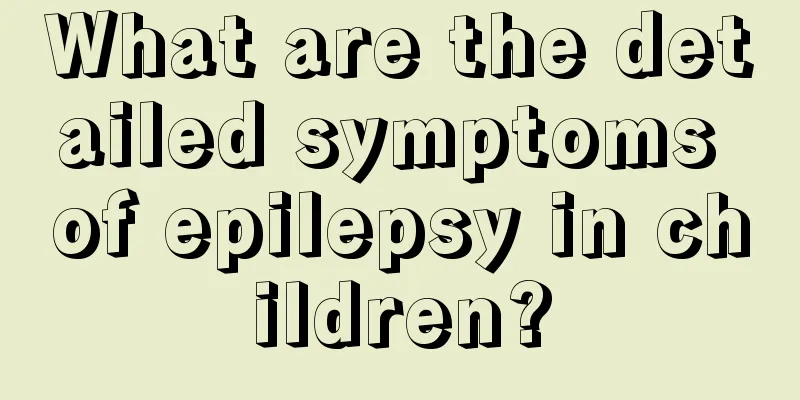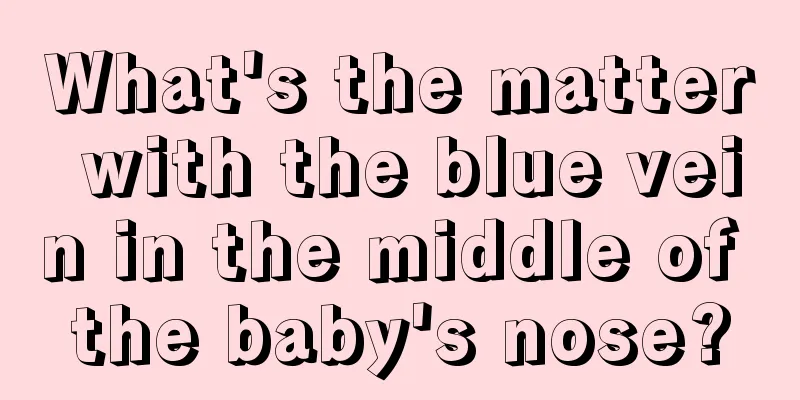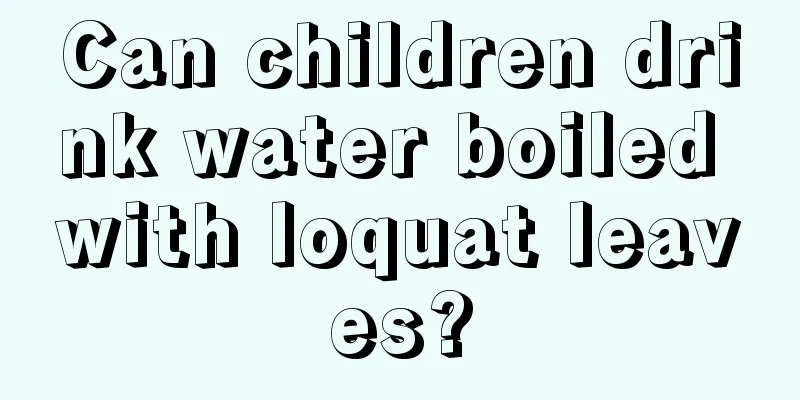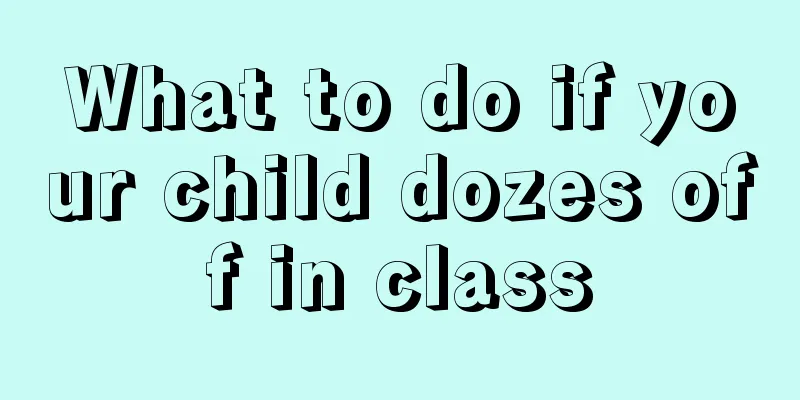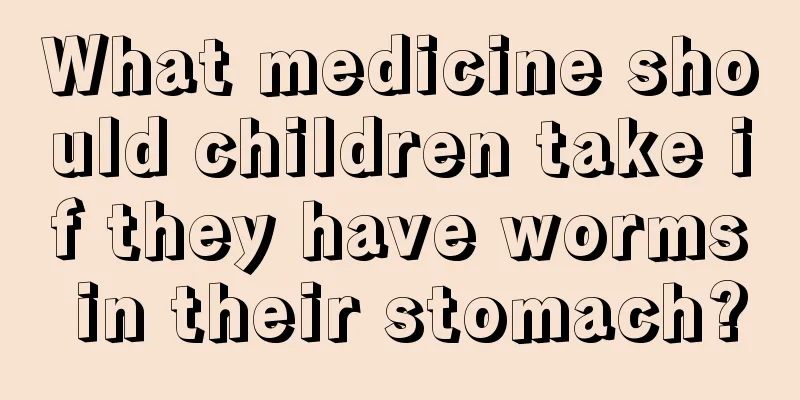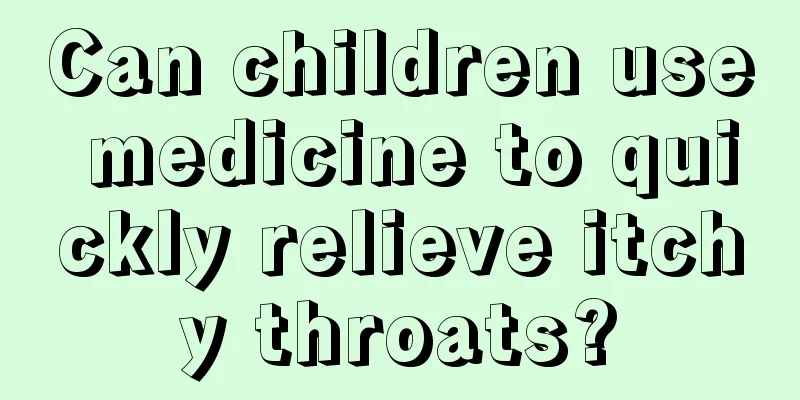How to deal with a high fever in children?
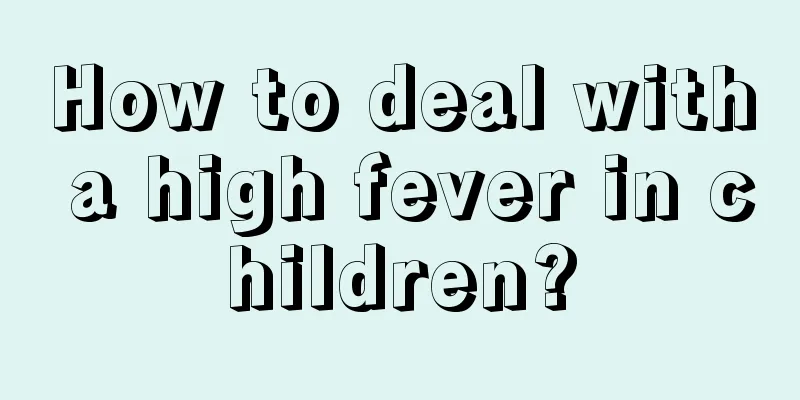
|
Nowadays, many parents are very concerned about their children, especially some symptoms that appear when their children have a fever, which makes parents very worried. So how to deal with a high fever? The editor will explain it in detail below, let’s take a look! 1. What is the normal body temperature of a baby? The body temperature of a newborn is slightly higher than that of an adult, especially for premature babies, whose body temperature regulation system is not yet fully developed and whose temperature regulation function is poor, so their body temperature is easily affected by the ambient temperature and changes. The average axillary temperature of infants in spring, autumn and winter is 36.6℃ in the morning and 36.9℃ in the afternoon; in summer, it is 36.9℃ in the morning and 37℃ in the afternoon. Some children may have an axillary temperature above 37°C, especially in summer, accounting for about 50%. Although the body temperature is high, observation shows that the child does not have any abnormal conditions. Therefore, children with a higher body temperature do not necessarily have a fever. Parents can make a judgment based on the actual situation of the child. For example, the baby's body temperature often fluctuates under the influence of certain factors. For example, in the evening, the baby's body temperature is often higher than in the early morning; the baby's body temperature will also rise temporarily after eating, crying, or exercising; if the baby's clothes are too thick, the room temperature is too high, etc., the baby's body temperature will also rise. If your baby has this temporary, small temperature fluctuation, it should not usually be considered pathological as long as he is in good general condition, energetic, and has no other symptoms and signs. 2. How many degrees is considered a fever for babies? The normal axillary temperature of a child is between 36℃-37℃, and it is considered a fever if it exceeds 37.4℃. Under normal circumstances, children's body temperature can fluctuate within a certain range. A body temperature above 37°C is considered a fever. 37.5℃-38.4℃ is a low fever, and above 38.5℃ is a high fever. But every child's physical condition is different, so it depends on the child's physique. If calculated based on rectal temperature, the normal baby's basal body temperature is 36.9℃-37.5℃. Generally, when the body temperature exceeds the basal body temperature by more than 1°C, it is considered a fever. Among them, low fever refers to body temperature fluctuating around 38°C, and high fever refers to body temperature above 39°C. Continuous fever for more than two weeks is called long-term fever. Generally speaking, oral temperature is 0.3℃-0.5℃ lower than rectal temperature, and axillary temperature is 0.3℃-0.5℃ lower than oral temperature. When a baby has a fever, physical methods should be used to reduce the temperature first. If the body temperature exceeds 38.5℃, medication should be used to reduce the temperature. While using medication to reduce fever, physical cooling should also be used. Physical cooling is suitable for babies with high fever and good circulation. You should also pay attention to providing your baby with comprehensive nutrition to improve his immunity. 3. What should I do if my baby has a fever of 38 degrees? Generally speaking, if the baby's fever is below 38.5℃, it is recommended to use only physical methods to help the baby reduce the temperature. Only give your baby antipyretics when the body temperature exceeds 38.5℃. Physical cooling methods for babies with fever: 1) 35% alcohol bath: Use a small towel to wipe the baby's neck, patting from top to bottom. Alcohol baths are suitable for children with higher fever. The method is to use 30% - 50% concentration of alcohol. If there is no alcohol, you can use white wine instead. Soak a small towel in it and wipe the child's neck, limbs, back, palms and soles of the feet. Pay special attention to wiping the armpits, elbows, armpits, groin and other areas rich in blood vessels. However, alcohol baths are not suitable for rash diseases such as measles. 2) Take a warm bath: adjust the water temperature between 27℃ and 37℃. Be careful not to give your baby a hot bath. Warm water sponge bath is suitable for cooling down children with high fever. The method is to wipe the child's skin all over the body with warm water at about 32℃-34℃. The chest, abdomen and other areas are sensitive to cold stimulation, so it is best not to wipe them. If a child with a rash has a fever, do not use warm water baths to cool him down. 3) Soak your feet in hot water: Soaking your feet can promote blood circulation and relieve discomfort. Another benefit of soaking your baby's feet when he has a fever is that it can help reduce the temperature. 4) Ice pack cold compress: If you feel the ice is too cold, you can take out the ice pack when it is half ice and half water, wrap it in a towel and apply cold compress to your baby. 5) Drink more water: Let your baby drink more water to help sweating and prevent dehydration. Water has the function of regulating temperature, which can lower body temperature and replenish water lost in the baby's body. 6) Use antipyretics: When the baby's core temperature (rectal temperature or ear temperature) exceeds 38.5℃, you can use antipyretic solutions or suppositories appropriately. 7) Send the baby to the hospital for treatment in time: When the baby's temperature exceeds 38.5℃, after taking antipyretics, or when parents do not know how to deal with it, the baby should be sent to the hospital in time for doctor treatment. 4. Is it normal for a baby to have cold hands and feet when he has a fever? Having a fever but cold hands and feet is a phenomenon of false cold and true heat, which is especially common in infants and young children under 3 years old. This is mainly because babies (especially infants) have less blood in their limbs than in their internal organs. Due to insufficient blood supply to their limbs, they are more likely to feel cold than adults. In addition, the baby's nervous system is not yet fully developed, and the autonomic nerves responsible for managing vasodilation and contraction are prone to disorder, causing the small blood vessels at the ends of the limbs to be in a spasmodic contraction state and become cold when the high fever first occurs. This is a normal pathological manifestation, and parents do not need to worry too much. The ambient temperature can also cause your baby's hands and feet to be cold. Because children's central nervous system is not yet fully developed, their ability to regulate body temperature is imperfect. If the ambient temperature is low and the child's hands are exposed to the outside for a long time, his hands and feet will become cold. 5. Baby develops rash after fever Roseola infantum, also known as fever rash or roseola, is a sudden rash caused by a viral infection. It can occur throughout the year, but is more common in spring and autumn. The incubation period of roseola infantum is approximately 10-15 days. Although it is a contagious disease, it is very safe and will not spread as widely as measles or chickenpox. The chance of family members being infected at the same time is low. Roseola infantum mostly occurs in infants and young children aged 6 to 18 months. The disease often develops suddenly, with a rapid rise in body temperature, usually between 39°C and 40°C. Severe patients with high fever in the early stages may have convulsions, and some may experience mild runny nose, cough, eyelid swelling, and conjunctivitis. During the fever period, there are symptoms such as poor appetite, nausea, vomiting, mild diarrhea or constipation, as well as congestion in the pharynx and swollen lymph nodes in the neck. After three to five days of fever, the body temperature drops suddenly. After the fever subsides, the child may develop light red macules or maculopapules of varying sizes all over the body, starting from the chest and abdomen and quickly spreading to the whole body. At this time, the child's fever has subsided and he can fall asleep peacefully. This is medically called "fever rash", which is a unique manifestation of roseola infantum. 6. What should I do if my baby has a fever after vaccination? After receiving the vaccination, the child should rest at the vaccination site for 15-30 minutes. If a high fever or other vaccination reactions occur after the vaccination, seek medical attention for prompt diagnosis and treatment. Reactions to vaccinations usually occur on the day of vaccination or the next day and are mostly low-grade fever, which generally does not require treatment. In principle, there is no need to rush to use medication to lower the baby's temperature if the baby's temperature does not exceed 38.5℃. The normal body temperature for babies is between 36.5 and 37.5 degrees Celsius. A fever between 37.6 and 38.5℃ is considered a low fever. Drink more water, don’t wear too many clothes, and take some Chinese medicine to clear away heat and detoxify. But if the temperature is just below 38.5℃, it is best not to take antipyretics. Taking antipyretics too early will affect the formation of children's immunity. Generally, from the age of 5 or 6 months, the child's immunity from the mother begins to decrease and his own immunity begins to form. If you have a fever at this time and treat it properly, you can enhance your immunity. If the temperature reaches above 38.5℃, it is considered a high fever and you can give him medicine to reduce the fever. It should be noted that for all medicines given to children, you must read the instructions carefully and not miss any of them. Through the above sharing, everyone has a certain understanding and countermeasures for high fever in children. Then in the future life, you may wish to refer to the methods shared by the editor and try them more! |
<<: At what age do children usually start to change their teeth?
>>: What does it mean when a toddler grinds his teeth while sleeping at night?
Recommend
30-month-old baby early education
A 30-month-old baby is already considered a big b...
The reason why babies have phlegm sounds when they sleep
Babies need a better environment when they sleep,...
What is the cause of phimosis in children?
There are some young children who are taken to th...
Burping with a rotten egg smell and loose stools
Burping with a rotten egg smell and loose stools ...
6-7 year old children crying in the middle of the night
Children aged six or seven often cry in the middl...
What to do if children have a cold, stuffy nose or runny nose
When children have a cold, many parents will be p...
How to cook eggplant for babies
As we all know, eggplant is actually a very nutri...
Symptoms of bronchial asthma in children
In recent years, the incidence of this disease is...
How to deal with the main manifestations of rickets sequelae?
Rickets is a disease that affects the development...
Height of 8-year-old girl
There is a certain standard for the height of an ...
At what age do children start to lose their teeth? What should I pay attention to?
When children are young, they don’t understand an...
What should I pay attention to in my baby’s diet starting from seven months old?
Now for many ladies who love beauty, breastfeedin...
Baby cervical spine development
When babies are very young, their bodies are ofte...
Why does my five-month-old baby keep shaking his head when sleeping?
Every child’s situation is different, and parents...
What to do if children have severe anemia
Anemia is a disease that is very common in childr...
